Some great films premiered in 1995, including Michael Mann’s HEAT, Todd Haynes’s SAFE and Mike Figgis’s LEAVING LAS VEGAS. None of those, I’m afraid, will be included in the following Year in Bedlam listing due to the fact that, as I’ve made clear elsewhere, these listings cover only obscure and/or underappreciated releases. No matter: I feel the thirty films ranked here are more than strong enough to represent the year movie-wise.
Another thing about 1995: it saw the release of a record number of bad movies (WATERWORLD, TANK GIRL, HACKERS, JOHNNY MNEMONIC, JUDGE DREDD, CONGO, CLOCKERS, WILD BILL, EMPIRE RECORDS, THINGS TO DO IN DENVER WHEN YOU’RE DEAD) that are now being passed off as “neglected classics.” Take it from one who wasted the time to do a before-and-after on all those films: they all sucked back in ‘95 and haven’t gotten any better in the ensuing years.
Anyway…
30. HEADLESS BODY IN TOPLESS BAR
A pistol-wielding psycho (Raymond J. Barry) takes a group of people hostage in a sleazy titty bar, forcing ‘em to engage in a twisted group encounter session. In the process, one guy admits to a predilection for enemas, a striptease is performed and a woman has a finger broken and her breasts fondled at length. Yes, this is unadorned sleaze, supposedly inspired by an actual New York Post headline. The staging is pretty pedestrian, but there are some truly winsome sequences—whatever else this film might be, it certainly isn’t boring.
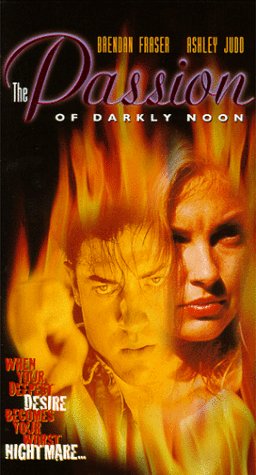 29. THE PASSION OF DARKLY NOON
29. THE PASSION OF DARKLY NOON
Brendan Fraser stars as a young man who escapes from a religious commune, shacks up with forest-dwelling Ashley Judd and her hubbie (Viggo Mortensen), and promptly goes mad. This is a straight to video affair that’s of interest primarily because it was written and directed by Philip Ridley, whose previous effort THE REFLECTING SKIN (1990) is a sick-movie favorite. Up until the last fifteen minutes or so DARKLY NOON looked like it might actually surpass its predecessor in creepiness and aberrance, but then everything goes to Hell. The climax, featuring Ashley J. getting chased around in her undies, cheapens everything that came before, turning an agreeably offbeat mood piece into a rural FATAL ATTRACTION—although the menacingly eerie charge of the earlier scenes continues to linger.
28. BROTHER OF SLEEP (SCHLAFES BRUDER)
From Germany, a vaguely PERFUME-ish period epic scented with magic and evil. Set in the early 19th Century, it’s about an eccentric young man (Andre Eisermann) who’s able to literally channel the Voice of God by playing the organ. He grows up in a rural village where he suffers at the hands of superstitious peasants and falls in love with an attractive young woman (Dana Varova) who ultimately betrays him, before impressing the wealthy denizens of a big city church in a memorably overwrought display of organ fu. The film suffers from the afflictions of quite a few expensive European productions past and present: the narrative is erratic (the protagonist’s musical abilities are never properly explained, and too much screen time is lavished on his asshole music instructor) and nearly all the characters are unsympathetic (including the protagonist, who comes off as weird and standoffish, and his love, who’s flighty and weak-willed). Yet it’s all beautifully visualized by director/cinematographer Joseph Vilsmaier, who to his credit isn’t afraid to take this oft-ridiculous material clear over the top.
27. GEORGIA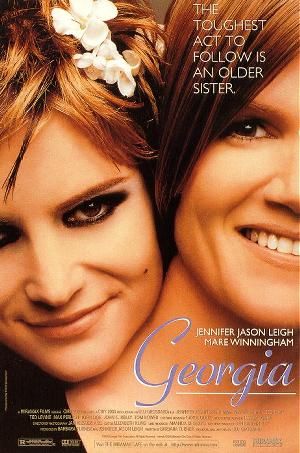
A terrific-for-the-most-part drama about the complex relationship between two sisters, one a famous crooner and the other a lounge singing wannabe. Never mind that I found the latter, as played by Jennifer Jason Leigh, to be a far more engaging stage presence than her sis, played by Mare Winningham as possibly the most bland performer this side of John Denver. Outside the concert scenes, though (which tend to drag), the film is solid, with Ulu (STRAIGHT TIME) Grosbard direction that allows scenes to unfold at their own rhythm and pace, and an impressively observant script by the late Barbara Turner (J.J. Leigh’s Ma). On the acting front Leigh is at her most extreme and Winningham just as potent in a far less showy role, with a minivan outburst by her character (“Let me go, Sadie!”) being the movie’s most memorable scene. She also croons her own songs, and, being a real-life singer, does so quite ably.
26. PANTHER
Not to be confused with another, more prominent 1995 movie with the same title, PANTHER is an unapologetically rotgut Indonesian actioner. Headlined by the indefatigable Barry Prima, it’s as trashy, outrageous and horrendously violent as anyone could hope for. Barry plays a cop looking to take down a drug ring headlined by a statuesque female seductress, whose outrages include peeing into a bottle and then forcing one of her underlings to drink it. Also on hand is the expected banquet of ultra-violence via guns and fists, and the revenge angle that sees Barry’s GF murdered by the druggies, inspiring a seriously bloody bout of redemptive ass-kicking in a box factory. My recommendation? That should you decide to see PANTHER, invest in a good quality edition, as the poorly mastered pan and scan versions currently streaming on YouTube and elsewhere do the film a serious disservice.
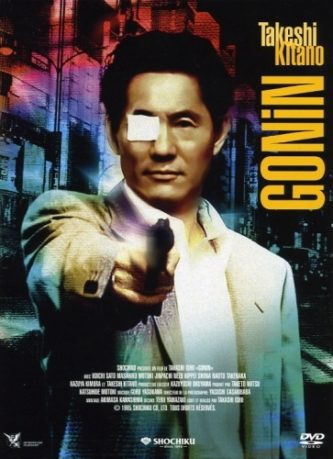 25. GONIN
25. GONIN
Japanese Yakuza madness with Takeshi Kitano as an amoral hitman who tracks down and brutally slaughters the members of a five-man band who’ve stupidly ripped off his outfit. That’s pretty much all there is to the story, which is nevertheless somewhat difficult to follow, decked out as the film is with distracting stylistic quirks and indifferent characters. It’s best to simply bask in director Takashi Ishii’s flashy visuals and relentless ultraviolence; this is not a great film by any means, but it is an extremely diverting one.
24. FERRUM 5000
If you were a reader of the late Film Threat Video Guide (as I was) then you’ll probably remember this 16-minute oddity being quite heavily promoted in its final issues. A defiantly unclassifiable work, FERRUM 5000 mixes gaudily photographed shots of B-movie extraterrestrials residing in a large space-agey structure with verite footage of bubbling mud and steam erupting at Yellowstone National Park, as well as some Busby Berkeley-esque dance numbers performed by gals in goofy fake alien get-up, all set to pleasantly ambient industrial muzak. I’ll refrain from offering any idea of what all this “means,” as I’m pretty sure there is no real meaning. Yet director Steve Doughton displays real visual panache, and the film is refreshingly free of campiness despite its kitschy veneer. Also worth seeing are Doughton’s other shorts FORMING, BETWIXT and CIRUCIT, which are very much of a piece with this one, and suggest that with a decent budget Doughton might conceivably give Guy Maddin a serious run for his money in the cult movie sphere.
23. LITTLE SISTER (ZUSJE)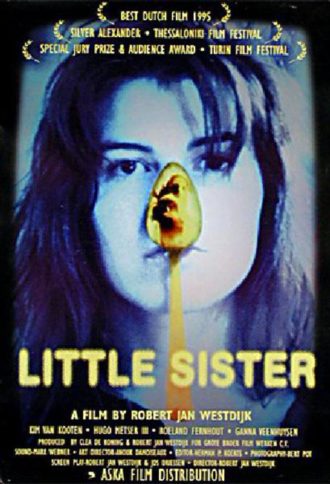
This little seen Dutch import was an early example of the found Footage film. Obviously LITTLE SISTER isn’t nearly as innovative as it once seemed, yet it still holds up reasonably well. It takes the form of a video diary made by a pervert (Romijn Conen) with an unhealthy affection for his 20-year-old sis (Kim van Kooten). The proceedings are nicely carried off by director Robert Jan Westdijk, who manages to sustain viewer interest throughout the 91 minute running time despite some boring parts (in particular the dynamic between the title character and her boyfriend, which was evidently supposed to be far more interesting than it actually is). There’s also a twist near the end involving the addition of a second video camera that makes things even more intriguing, and a decidedly perverse ending.
22. BUTTERFLY KISS
This British film, about killer lesbians on the loose, is a resolutely thoughtful, well-made piece of work despite its potentially exploitive subject matter. The director was the prolific Michael Winterbottom (WONDERLAND, THE CLAIM, THE KILLER INSIDE ME, etc.), and BUTTERFLY KISS was one of his earliest attempts at feature filmmaking. Saskia Reeves plays a naive and withdrawn mini-mart attendant who gets involved with a schizophrenic woman (Amanda Plummer, who’s never been better) who has an unfortunate penchant for murdering people she doesn’t like. Reeves tries to “save” her lover (the script cleverly utilizes after-the-fact interviews, apparently given in prison, detailing her ever-shifting feelings), but only ends up furthering the madness. The film is darkly amusing and disturbing for the most part, although I could have done without the distracting and vastly overused music cues from the likes of Bjork and P.J. Harvey (apparently to emphasize the femininity of the enterprise).
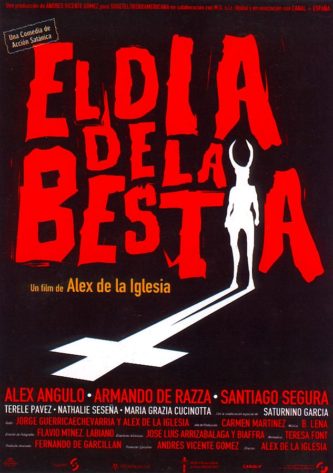 21. THE DAY OF THE BEAST (EL DIA DE LA BESTIA)
21. THE DAY OF THE BEAST (EL DIA DE LA BESTIA)
A fun, disposable Spanish romp about a renegade priest (Alex Angulo) who seeks to summon and take on the Devil by committing all the evil he possibly can. Looking to buy some heavy metal cds, he meets a portly longhair (Santiago Segura) who aids him in his quest, which takes them to the lair of a TV psychic (Armando de Razza) and an increasingly outrageous series of misadventures. It’s all quite (intentionally) silly, with oft-frantic and overwrought direction by Alex de la Iglesia (following up 1993’s similarly minded ACCION MUTANTE), but any film that has a row of street corner Santas mowed down by machine gun fire, as this one does, gets my vote.
20. HABIT
Probably the best film yet made by New York’s Larry Fessenden, a new wave vampire pic that mixes blood sucking with Martin Scorsese-style big city angst. Fessenden is quite effective as the protagonist, a NYC hipster who falls for a weird chick (Meredith Snaider) who may be a vampire. She draws him into a freaky world of blood-letting and hallucination, evoked through jittery handheld photography. At nearly two hours the film is a bit overlong, especially considering that very little actually happens in the first half, but overall it’s a dark, trippy, anxiety-inducing spectacle with a real sense of style.
19. BYE BYE LOVE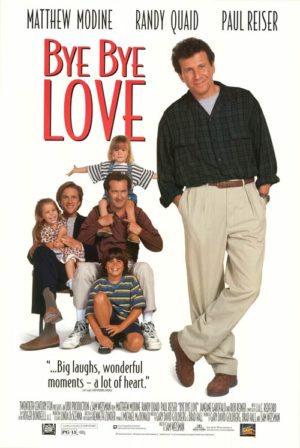
A big-screen sitcom to be sure, but that needn’t be a bad thing. Director Sam Weisman and screenwriters Gary David Goldberg and Brad Hall are all episodic TV veterans, and pack the proceedings with disposable gags (I kept waiting for a laugh track), yet they also attain a depth of character-based drama that most movies don’t approach. This is to say that the characters in BYE BYE LOVE are all quite flawed and quirky, with those quirks viewed as celebratory rather than things to be improved upon. Matthew Modine, Randy Quaid and Paul Reiser are all quite strong as a trio of divorced suburban dads who meet every week at the local MacDonald’s to pick up their kids, and the movie does a credible job detailing the complicated issues confronting them. And let’s not forget Jeneane Garofalo in a surprisingly endearing turn as a severely neurotic young woman who dates Quaid, proving she has the stuff despite an overabundance of subsequent lame performances.
18. THE MOOR’S HEAD (DER KOPF DES MOHREN)
This bleak and disturbing Austrian production was scripted by the incomparable Michael Haneke, and if he’d directed it as well (as he apparently wanted to at one point) THE MOOR’S HEAD would doubtless be much better than it is. Not that the film isn’t extremely powerful in its present Paulus Manker helmed form, being the uncompromising account of a family-oriented scientist (Gert Voss) who goes mad after learning of an accident at a chemical plant that releases toxic gas into the atmosphere. He begins experiencing hallucinations involving flayed corpses and splattered blood, and creates a self-sufficient environment in his apartment, complete with edible crops grown under a sunlamp and several rabbits and birds. Eventually Voss’s wife and kids, who’ve been on a trip, return to face his handiwork—by which point the poor guy can no longer be sure what’s real and what isn’t (and neither, for that matter, can the viewer). The final scenes are nasty and profoundly nightmarish, complete with a graphically depicted self-mutilation that had me all-but climbing the walls.
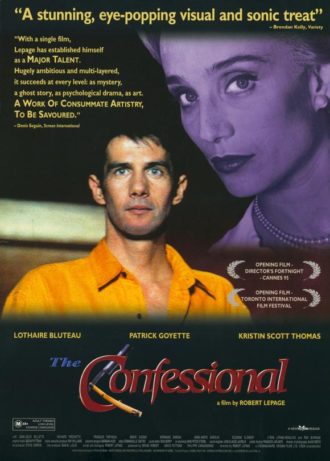 17. LE CONFESSIONNAL (THE CONFESSIONAL)
17. LE CONFESSIONNAL (THE CONFESSIONAL)
A stunningly designed French-Canadian film about two adopted brothers (Lothaire Bluteau and Patrick Goyette) who meet up in present-day Quebec, and their parents, whose sole claim to fame is the fact that they were around for the shooting of Alfred Hitchcock’s I CONFESS back in the fifties. Writer-director Robert LePage, a longtime theatrical impresario making his film debut, jumps back and forth between the two time periods, with the brothers searching for info on their lost father, and their mother (Suzanne Clement), who was pregnant with one of ‘em and trying to get the other cast by Hitchcock. We also meet Hitchcock himself in an okay impersonation by Ron Burrage, and Kristin Scott Thomas shows up briefly as Hitch’s harried assistant. Everything seems to orbit around a mysterious secret that, when it’s finally unveiled, really isn’t all that earth-shattering. Or maybe I missed the point altogether (this is, after all, a film that demands multiple viewings). In any event, it’s a very stylish, carefully wrought endeavor with impeccably composed visuals.
16. FAGIN’S CHILDREN
A threadbare crime picture, based on a real incident, that reminded me (favorably) of THE HONEYMOON KILLERS. Set in Santa Barbara, Ca, it’s the story of a moppy-headed teen (Brad Davis) drawn into the web of a psychopath (Paul Hagerty) who runs a pubescent crime ring—so far so wrong, but when the power-mad Hagerty commits a senseless murder things spiral completely out of control. Shot in low-rent black and white that imparts a sense of grimy realism, it’s a surprisingly stylish production with clear-eyed observation being its chief virtue. Writer/director Peter Hyoguchi (FIRST, LAST AND DEPOSIT) grew up in Santa Barbara, and clearly knows the milieu; his cast of overprivilaged SoCal teens are flawlessly rendered studies of a type I’ll admit to having known a bit too well. It’s just a shame that Hyoguchi flubs the descent-into-madness angle, with hysterical overacting and poorly choreographed action ruining what should be a nail-biting climax. FAGIN’S CHILDREN is still well worth seeing, though, boasting as it does one out-and-out classic scene: the protagonist attempting to lose his virginity in a cheap motel room while STAR TREK plays on TV.
15. BANG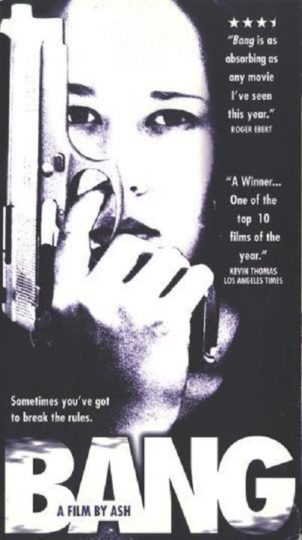
This ultra-low budgeter was a verite effort shot on the streets of LA. It begins with a young actress (Darling Narita) being evicted from her shithole apartment and sexually harassed by a slimeball producer and a corrupt motorcycle cop. Deciding she’s had enough, she snatches the latter’s gun and forces him to strip at gunpoint, then puts on his clothes, steals his cycle and drives around LA pretending to be a fuzzard. Writer-director Ash keeps things jumping with handheld camerawork and an ever-present sense of impending doom that keeps us on edge even when the action isn’t particularly intense (the film is shot mostly in real time). With Peter Greene as a nutty homeless man, several brutal beatings, an attempted suicide, a drive-by shooting and an air of gritty authenticity that never wavers.
14. WHO IS HENRY JAGLOM?
A slight but invigorating 52-minute look at Henry Jaglom, who if you ask me is one of the most irritating, self-indulgent filmmakers in America. His films are little more than glorified home movies in my view, yet many, including the makers of this film, insist on treating them as something significant. I’ll give the moviemakers credit for presenting Jaglom as the contradictory, irascible, overbearing individual he is. He claims a lifelong kinship with the fairer sex (evident in his flicks, which make most Hollywood rom-coms look downright testosterone-fueled by comparison), yet his prickly and controlling nature is quintessentially male. The movie features testimonies from quite a few individuals who know Jaglom, such as the actors Andrea Marcovicci, Martha Plimpton, Sally Kellerman and Dennis Hopper, all of whom have decidedly complex opinions of the man, as well as a number of more-or-less normal folks giving their uncensored reactions to Jaglom’s work, including quite a few who really hate his films. I’d say the cliché “Warts and All” describes this film quite well.
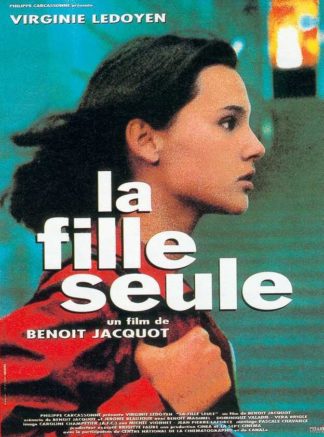 13. A SINGLE GIRL (LA FILLE SEULE)
13. A SINGLE GIRL (LA FILLE SEULE)
A mostly exhilarating throwback to the French New Wave films of the 1960s, with Virginie Ledoyen as a twentyish hottie working in a Parisian hotel. Most of the film plays out in real time, and the scenes where we follow Ledoyen through the streets of Paris were shot off the cuff (complete with crowd members staring curiously at the camera). The lengthy middle section, where the heroine toils in the hotel, is what makes the film work, generating some honest-to-goodness suspense from the unlikeliest of material (plus Ledoyen, I must say, looks great in her leggy hotel staff outfit). The final bit, alas, in which Ledoyen, bearing an unflattering haircut, canoodles with her mother and infant son, largely falls flat.
12. THE DEATHMAKER (DER TOTMACHER)
One of the toughest, most relentless depictions of madness and murder you’ll ever see, despite the fact that, ironically, this film doesn’t contain a single instance of onscreen violence. For that matter, there’s little action of any sort, as THE DEATHMAKER consists almost entirely of a two-person interrogation—but what comes out during that interrogation is profoundly heady stuff. The subject is Fritz Haarmann, a psychopath who back in the 1920’s killed and dismembered 24 young boys in Hanover, Germany. Haarmann was previously the subject of Fritz Lang’s M and Ulli Lommel’s TENDERNESS OF THE WOLVES; the present film is the most realistic of the three, seeing as how it was adapted directly from Haarmann’s actual 1924 psychiatric report. Gotz George portrays Haarmann in what must be counted as one of the ballsiest performances in cinema history, frankly confessing to disemboweling young boys, flushing their penises down toilets and discarding their skins in a river. Of course there are dead spots here and there (inevitable in a 115 minute talkfest), but director Romuald Karamkaer’s approach is impressively cinematic, not to mention admirably unflinching.
11. ARIZONA DREAM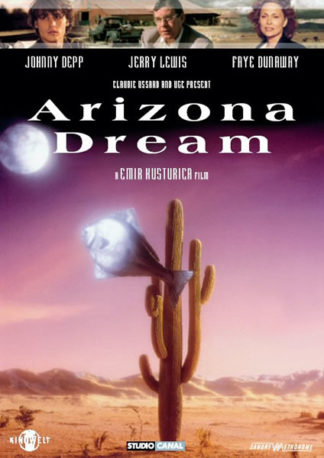
Here I’m referring to the director’s cut of the Emir Kusturica comedy ARIZONA DREAM, released to the arthouse circuit two years after the film’s initial cut-down version premiered. The director’s first and only Hollyweird product, ARIZONA DREAM is every bit as boisterous and anarchic as homegrown Kusturica efforts like TIME OF THE GYPSIES and UNDERGROUND, and at 2½ hours would seem a prime candidate for postproduction trimming–but upon viewing the edited version after experiencing the director’s cut I found myself missing the scenes that were excised. Clearly, bloat and unevenness are crucial components of Kusturica’s cinema, of which the full version of ARIZONA DREAM is a prime example. It stars Johnny Depp as a young New Yorker who gets involved with an older woman (Faye Dunaway) after returning to the Arizona home of his car dealer uncle (Jerry Lewis). Also featured are Vincent Gallo as Depp’s acting enthusiast brother and Lili Taylor as Dunaway’s suicidal daughter, who respectively headline two of the film’s most sublime comic set-pieces: an absurd recreation of the crop duster sequence in NORTH BY NORTHWEST and an even nuttier bungee cord suicide attempt. Plus, Kusturica somehow manages to work in a series of elaborate dream sequences set in Alaska and a large fish that periodically swims through the air. Yes, it’s that kind of movie!
10. AUGUST IN THE WATER (MIZU NO NAKA NO HACHIGATSU)
Sogo Ishii has long been one of Japan’s most interesting filmmakers, and this is one of his most unique concoctions: a modest (if eccentric) high school sports drama that somehow morphs into a sci fi epic on the order of 2001: A SPACE ODYSSEY. Forsaking the kineticism of early Ishii films like BURST CITY and THE CRAZY FAMILY (and later ones like ELECTRIC DRAGON: 800,000v), AUGUST IN THE WATER is done in the highly refined, atmospheric style of Ishii’s other nineties productions ANGEL DUST and LABYRINTH OF DREAMS. This means a slow and demanding film, but also an uncommonly stylish and thoughtful one that’s guaranteed to be unlike just about anything else you’ll see. Set in a region where high tech development and unspoiled nature co-exist in uneasy harmony, the film centers on a young diver (Rena Komine) who during a competition envisions the water hardening and nearly drowns. She emerges from the experience a different person, inexplicably obsessed with a fallen meteor embedded in a local mountain that bears some strange symbols. Around her, meanwhile, countless people suffer from a mysterious disease that turns their insides to stone (an idea cannibalized from Ishii’s 1993 3-parter TOKYO BLOOD), and it all comes together in a wondrous finale that’s highly elliptical yet deeply satisfying nonetheless. I only wish this film were available in something other than 12th generation bootleg form; for that matter, I’d really like to experience it on a big screen, although I’m definitely not holding my breath for that to occur.
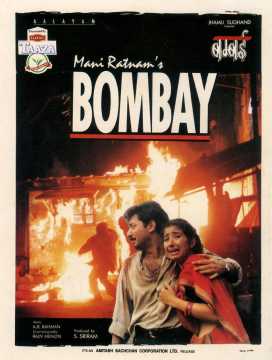 9. BOMBAY
9. BOMBAY
One of the key Bollywood productions of the nineties, Mani Ratnam’s BOMBAY is a multi-genre epic that blends romance, slapstick and politics into an insanely melodramatic, wildly energetic stew with (of course) quite a few large-scale musical numbers. At 140 minutes it’s shorter than the average Bollywood film, but Ratnam still succeeds in imparting an incredibly broad, decade-spanning canvas. It starts off like an Eastern ROMEO AND JULIET, with a young Hindi man (Shekhar Narayanan Pillai) falling in love with a Muslim woman (Shaila Bano). Despite the disapproval of their families the lovebirds run off, get married and birth to two kids. Years later, residing in Bombay, this apparently happy family finds itself caught up in the real-life Muslim-Hindi clashes of 1992, leading to a blood-soaked and suspenseful climax. Such disturbing brutality is unusual for a Bollywood production (most of which don’t allow any hint of reality to intrude), but it helps put an already first-rate film over the top. It’s one of the very few films of any sort that can truly be said to have something for everyone.
8. AMMORU
A first-class mind-roaster of a type that could only emerge from Telangana in the south of India, the region of “Tollywood.” AMMORU is an extremely expensive film that was quite groundbreaking back in 1995 because of its extensive use of CGI. Of course that CGI looks hopelessly primitive by today’s standards, but still does its job admirably, most notably in the jaw-dropping climax, which combines arcane rituals, song and dance, spurting blood and freaky transformations. The rest of the film isn’t too bad, either. It features Ammoru, a Hindu goddess stuck on Earth in the form of a yellow statue that creates a flesh-and-blood incarnation of the Goddess in the form of a little girl to protect a young woman being abused by her evil step-family. The film is a bit uneven overall, not to mention extremely culture-centric; I understand several Indian folk tales were interwoven into the narrative, together with numerous obscure (by Western standards) rituals and incantations. But AMMORU is also lightning paced and incident packed, and, most importantly, never boring.
7. INDICTMENT: THE McMARTIN TRIAL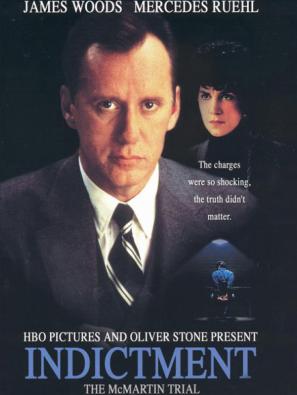
As a former resident of Manhattan Beach, CA who had several friends who attended the infamous McMartin preschool, I have a special interest in this Oliver Stone produced, Mick Jackson directed made-for-HBO dramatization of the McMartin case. Said case centered on the owners of the school and their son Raymond Buckey (Henry Thomas), who supposedly molested hundreds of their pupils, resulting in a lengthy trial that made headlines all over the country. The McMartins were ultimately found innocent of the charges against them, although their reputations never recovered. But onto the film under review, which is damn good. Jackson’s excitable, fast-cutting style seemed annoying in L.A. STORY and THE BODYGUARD, but works quite well in relating this hellaciously complex tale; there are at least a dozen characters and just as many subplots, yet I never had trouble following the narrative. The script by veteran Abby Mann is ballsy and unflinching, taking us swiftly through all the major points in the 7-year trial. I don’t agree with Mann’s impassioned hypothesis that the McMartins were completely innocent (like I said, I knew quite a few messed-up kids who attended their school), but can’t deny that the film does an excellent job depicting the carnival-like atmosphere the trial took on in its later stages, with accusations so insane (such as a claim that the kids were taken to Mexico and sold as prostitutes) that it was impossible for the jury to vote any other way.
6. SONIC OUTLAWS
Underground filmmaker Craig Baldwin remains one of the most vital and imaginative talents on the scene. SONIC OUTLAWS, which followed Baldwin’s masterful shorts TRIBULATION 99 and O NO CORONADO!, is a documentary on the band Negativeland, who in the early nineties were sued by Island Records for violating U2’s copyright. Negativeland, it seemed, released an album called U2 in which they used the band’s lyrics in various subversive ways, leading to a legal drama that Baldwin carefully documents. In truth, however, the above is only a prelude to a wildly anarchic free form collage. In the manner of other Baldwin productions like the aforementioned TRIBULATION 99 and SPECTRES OF THE SPECTRUM, we get a playful yet deeply thought-provoking barrage of old movie and TV clips, spiced with commentary from a number of artists and lawyers offering their perspectives on copyright infringement. No matter what your stance on the issue may be, this film is guaranteed to give you a whole new perspective on it. It is itself, after all, infringing on countless peoples’ copyrights with its abundance of “found” footage (somehow I don’t think Baldwin got permission from the copyright holders of the countless media snippets on display here). Quite simply, nobody else does this sort of thing as well as Craig Baldwin, who creates a provocative cinematic essay with enormous verve and audacity.
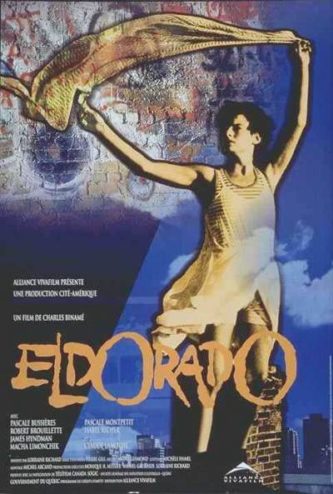 5. ELDORADO
5. ELDORADO
This heavily improvised Canadian drama plays like a collaboration between John Cassavetes and Wong Kar Wai. We look in on the lives of six losers in Montreal during the summer of ‘94, in particular a club-hopping disc jockey (James Hyndman) and a lesbian drifter (Pascale Bussieres) whose lives intersect at a crucial time for both. Director Charles Biname has created a film that fascinates and annoys in equal measure. Edgy, kaleidoscopic and occasionally tedious, ELDORADO is one of the few completely convincing cinematic portraits of life in mid-nineties Canada (when I was a resident). The actors, of course, are all top notch—which shouldn’t be too surprising, as they all receive screenwriting credit.
4. FORGOTTEN SILVER
An amazingly clever mock documentary co-directed by a pre LORD OF THE RINGS Peter Jackson. It concerns a forgotten filmmaker named Colin McKenzie who apparently managed to revolutionize the art of film, inventing sound, color and camera movement years before their officially recorded start. Unfortunately, McKenzie fell out of favor while filming his masterpiece SALOME, spending an obscene amount of money on a massive New Zealand jungle set. Scenes from McKenzie’s films are intercut with interviews with the likes of Harvey Weinstein and Sam Neil, along with footage of Jackson and his fellow archivists searching the jungles for McKenzie’s fabled mock-Jerusalem. The appropriately scratchy, bleached-out old-movie recreations are extraordinarily convincing (a number of New Zealand film folk apparently thought they were real), and yet Jackson and co. never lose sight of their film’s inherent absurdity. The result is a lively and hilarious put-on, and one of Jackson’s best-ever works.
3. LES MISERABLES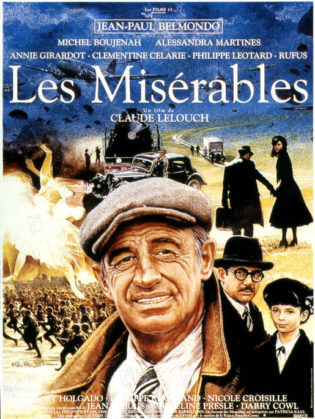
A film that was largely ignored upon its initial release (and still is), this is one of the screen’s premiere transpositions of LES MISERABLES. Viewing it admittedly requires close attention, and also a working knowledge of Victor Hugo’s source novel, which are two probable reasons it’s been so widely ignored. Jean-Paul Belmondo plays an ex-boxer caught up in Nazi-occupied France (and also the father of same, as well as Jean Valjean in fantasy recreations of scenes from LES MIZ). Unable to read, Belmondo has a Jewish couple he’s helping hide from the Nazis read him passages from the novel, and finds himself inspired by it, just as the lives of everyone involved come to increasingly parallel characters and events from Hugo’s classic. Belmondo delivers what is unquestionably one of his greatest-ever performances in the meatiest of his three roles, delivering a terrifically moving evocation of virtue and integrity in a world that seems determined to thwart his good intentions at every turn. Credit must also go to writer-director Claude Lelouch, who was never one of my favorite filmmakers but does exquisite work here, providing both a sophisticated dissertation on Victor Hugo’s classic and a sumptuously mounted old school epic.
2. INSTITUTE BENJAMENTA, OR THIS DREAM THAT ONE CALLS HUMAN LIFE
The premiere live-action feature by the British animators Stephan and Timothy Quay, who have a vision as ingeniously surreal and deranged as Lynch or Svankmajer. INSTITUTE BENJAMENTA is a loose adaptation of Robert Walser’s novella JACOB VON GUNTEN, about a young man with zero prospects who attends a school for servants, and becomes involved with the lonely headmistress. The film is well-cast, to be sure: future Oscar winner Mark Rylance is a perfect fit in the main role (despite being several years too old), and the always-interesting Alice Krige simply nails the role of the erotically-inclined headmistress. There really isn’t any story to speak of; the opening scenes are fairly straightforward, but then the film drifts into a languid, dreamlike reverie marked by gorgeous black and white photography and a nonstop barrage of bizarre imagery. I’m not sure if this is all intended to be taken seriously or as a giant put-on (as would appear to be the point of the hero’s search for the school’s heart that turns up a measly bowl of water and a goldfish). It’s best, I think, to simply view it as a cockeyed tour through the Quays’ inimitable cinematic universe, which I say is more than enough to sustain one’s interest through multiple viewings.
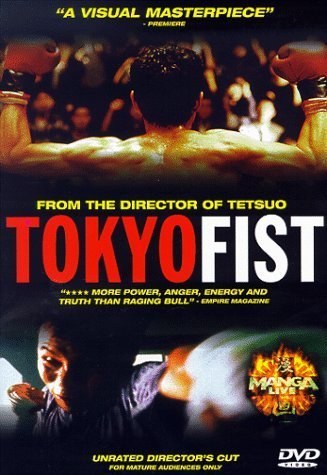 1. TOKYO FIST
1. TOKYO FIST
This may well be Shinya Tsuakamoto’s supreme masterpiece, an almost unbearably intense sucker punch of a movie bolstered by convulsive handheld camerawork and a rousing industrial score. Running a lean 84 minutes, it centers on a working drudge (Tsukamoto himself) living in the urban hellscape of modern Tokyo, whose life with his seemingly uncomplicated wife (Kaori Fujii) is threatened by the arrival of a boxer (Koji Tsukamoto) he knew back in high school. The latter steals the protagonist’s wife away from him, leading to Tsukamoto becoming obsessed with body building and boxing, just as his wife immerses herself in body piercing in route to a winsome three-way showdown that takes place on multiple planes of reality. The result is a hyper-gory mind blower with a genuinely artistic edge, and much to say about the dehumanizing effects of life in modern Japan. It’s a bit like Tsukamoto’s TETSUO crossed with RAGING BULL, although in truth TOKYO FIST is “like” nothing else. I do, however, have one rather pressing complaint: to date, the film’s sole US DVD/Blu-ray incarnation is via the out-of-print Manga Entertainment release, which despite some striking cover art contains a less-than-ideal visual transfer. Surely we can do better than this!
